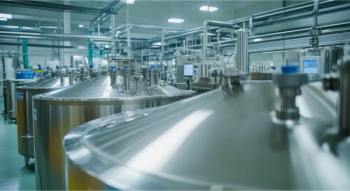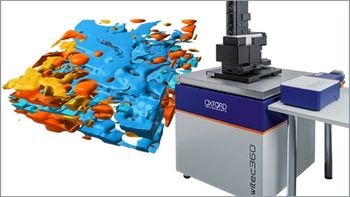
- Spectroscopy-06-01-2020
- Volume 35
- Issue 6
A Spectroscopic Revolution in the Agricultural World
In celebration of Spectroscopy’s 35th Anniversary, leading experts discuss important issues and challenges in analytical spectroscopy.
There are more than 800 million people in the world, around 10% of the world population, suffering from chronic undernourishment (1). This number will likely continue to grow and by 2050 we will need to produce 70–100% more food to meet nutritional demands of the world’s growing population (2). This need can be met by continuous expansion of agricultural lands. However, this approach is inefficient, destructive to nature, and can offer only a short-term solution for global food security. An alternative strategy is to develop precision agriculture (3).
Precision agriculture is a farming management concept that is based on timely diagnostic of biotic and abiotic stresses on plants. Biotic stresses include various plant diseases. Abiotic factors include problems such as drought, salinity, heat, and nutrient deficiency. These stresses can reduce crop yield up to 100%. If problems are diagnosed early, however, appropriate plant treatment can be made to improve plant health. For instance, pesticides or fungicides can be spread over a certain area of the field to cease proliferation of pathogens. Alternatively, a certain micro- or macro-element can be sprayed over the field to fulfill a need for it in the growing plants.
Although several approaches can be used to detect such stresses, none of them meets farmers’ expectations. Imaging with satellite and unmanned aerial vehicles (UAVs) detect “problem areas” in the field by a change in plants’ color (4). However, this approach is not specific because plants can turn yellow because of drought, nutrient deficiency, or viral or fungal disease. Polymerase chain reaction (PCR) and enzyme-linked immunosorbent assay (ELISA) provide desired specificity and selectivity. However, PCR or quantitative PCR (qPCR) testing becomes unrealistically expensive (one PCR or qPCR test is ~$15) once scaled to larger agricultural territories.
Raman spectroscopy is a label-free technique, which essentially makes the cost of analysis equal to zero. Also, it is noninvasive, nondestructive and portable, allowing for spectral acquisition directly in a field (3). The question to ask is, How useful can Raman spectroscopy be in agriculture?
Several years ago, our group showed that Raman spectroscopy is capable of confirmatory diagnostics of fungal disease in corn, wheat, and sorghum (5,6). We found that this approach has 100% accuracy and species sensitivity in pathogen diagnostics (7). Recently, we developed the use of Raman spectroscopy for detection and identification of Huanglongbing (HLB), a devastating disease that destroys citrus trees in Texas and Florida (8,9). The disease is caused by bacteria that are vectored by psyllids. Infected trees exhibit chlorotic appearance of leaves, preliminary fruit drop, and ultimately a death of the entire plant. In collaboration with Prof. Kranthi Mandadi of Texas A&M University, we showed that Raman spectroscopy can be used to detect presymptomatic HLB and distinguish it from nutrient deficiency (ND) (8,9). Using a handheld Raman spectrometer, we collected spectra from four groups of plants: 1) symptomatic qPCR positive plants; 2) asymptomatic plant qPCR positive for HLB; 3) trees that exhibited nutrient deficiency symptoms, which had similar visual appearance to symptomatic HLB plants; and 4) healthy control plants. We have found that Raman spectra collected from symptomatic and asymptomatic plants exhibited an increased in intensity of phenylpropanoids (~1610 cm-1) relative to the intensity of this band in the spectra collected from healthy trees (negative to HLB by qPCR) (9). It should be mentioned that in addition to an increase in the intensity of phenylpropanoids, spectra of symptomatic and asymptomatic plants had a decrease in intensities of 1155, 1184, 1218, 1288, and 1326 cm-1 bands, which were assigned to cellulose and xylan. It has been also found that spectra collected from ND trees had even more intense vibration of phenylpropanoids together with the appearance of a band at 1247 cm-1, which was assigned to phenolic vibration. This evidence allowed for a clear differentiation of HLB from ND trees and healthy trees. Sanchez and coworkers also used chemometrics to enable quantitative diagnostics of HLB and ND on citrus trees. In the first set of models, healthy plants were differentiated from ND and HLB plants. The accuracy of predicted was 98% for grapefruit trees and 87% for orange trees. In the subsequent set of models, chemometrics was used to distinguish symptomatic versus asymptomatic plants. The accuracy of prediction appeared to be 100% for grapefruit and 94.4% for orange trees (9). This work showed that Raman spectroscopy can be used for accurate diagnostics of HLB and ND on citrus trees, which helps to enable timely management of that devastating disease in field.
Microscopic analysis of HLB-infected trees confirmed spectroscopic evidence provided by Sanchez and coworkers (10). It has been found that HLB infection results in deformation of cambium cells, collapse of phloem, callose plug formation, and thickening of cell walls of parenchyma cells (10). Cell wall thickening can happen in the attempt to block propagation of bacteria inside the plant. Alternatively, one can imagine that plants secrete low molecular weight phenylpropanoids aiming to deactivate bacteria. However, these phenylpropanoids later polymerase into high molecular weight phenylpropanoid polymers. Thus, such phenylpropanoid polymerization can cause observed histological changes. This microscopic evidence demonstrates that in addition to being used for diagnostics, Raman spectroscopy can be used to probe the molecular mechanism of plant responses to biotic and abiotic stresses.
The use of Raman spectroscopy in agriculture stretches far beyond the citrus industry. Our recent discovery indicate that Raman spectroscopy can be used to differentiate between hemp and cannabis with 100% accuracy (11). Moreover, different strains of cannabis can be identified using Raman spectroscopy. This extreme sensitivity of Raman spectroscopy becomes even more useful once it is applied to identification of grain plant species and their varieties. Our group showed that Raman spectroscopy can be used for both non-invasive phenotyping of corn and peanut varieties and highly accurate identification of nutrient content of corn and peanut seeds (12,13). Specifically, in only 1s of analysis of intact corn and peanut seed, full information about its carotenoid, protein, fiber, and carbohydrate content can be revealed. This allows for the use of Raman spectroscopy directly on combines and grain elevators, probing economic value of grain.
These exciting studies highlighted the large potential of Raman for agriculture that has been overlooked for years. Our group is convinced that the need for such fast, noninvasive and confirmatory analytical approach will only grow in the future.
References
- “UN projects world population to reach 8.5 billion by 2030, driven by growth in developing countries” United Nations news article,
https://news.un.org/en/story/2015/07/505352-un-projects-world-population-reach-85-billion-2030-driven-growth-developing - H.C. Godfray, J.R. Beddington, I.R. Crute, L. Haddad, D. Lawrence, J.F. Muir, J. Pretty, S. Robinson, S.M. Thomas, and C. Toulmin, Science 327, 812–818 (2010).
- C. Farber, M. Mahnke, L. Sanchez, and D. Kurouski, Trends Analyst. Chem. 118, 43–49 (2019).
- S. Baena, J. Moat, O. Whaley, and D.S. Boyd, PLoS One 12, e0188714 (2017).
- V. Egging, J. Nguyen, and D. Kurouski, Anal. Chem. 90, 8616–8621 (2018).
- C. Farber and D. Kurouski, Anal. Chem. 90, 3009–3012 (2018).
- L. Sanchez, C. Farber, J. Lei, K. Zhu-Salzman, and D. Kurouski, Anal. Chem. 91, 1733–1737 (2019).
- L. Sanchez, S. Pant, M.S. Irey, K. Mandadi, and D. Kurouski, J. Raman Spectrosc. 50, 1875–1880 (2019).
- L. Sanchez, S. Pant, Z. Xing, K. Mandadi, and D. Kurouski, Anal. Bioanal. Chem. 411, 3125–3133 (2019).
- C. Brodersen, C. Narciso, M. Reed, and E. Etxeberria, HortScience 49, 59–64 (2014).
- L. Sanchez, C. Filter, D. Baltensperger, and D. Kurouski, RCS Advances 10, 3212–3216 (2020).
- M. Krimmer, C. Farber, and D. Kurouski, ACS Omega 4, 16330–16335 (2019).
- C. Farber, L. Sanchez, S. Rizevsky, A. Ermolenkov, B. McCutchen, J. Cason, M. Burow, and D. Kurouski, Sci. Rep. 10, 7730 (2020).
Dmitry Kurouski is an assistant professor in the Department of Biochemistry and Biophysics and the Department of Biomedical Engineering at Texas A&M University, in College Station, Texas. Direct correspondence to
Articles in this issue
over 5 years ago
Vol 35 No 6 Spectroscopy June 2020 Regular Issue PDFover 5 years ago
Celebrating 35 Years of Spectroscopyover 5 years ago
Handheld Near-Infrared Spectrometers: Reality and Empty Promisesover 5 years ago
One Real Challenge That Still Remains in Applied ChemometricsNewsletter
Get essential updates on the latest spectroscopy technologies, regulatory standards, and best practices—subscribe today to Spectroscopy.





